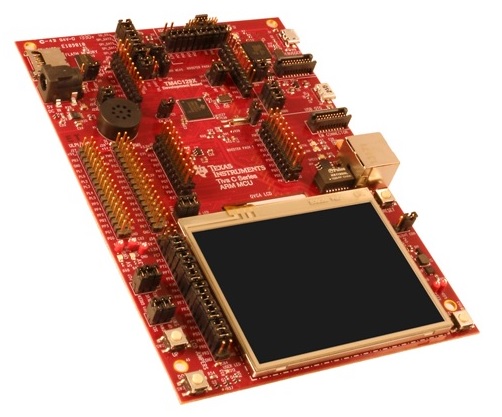This post sponsored by Texas Instruments.
Very rarely does a design utilize a single technology. Virtually every electronics design combines a variety of functions and devices that meld to tackle a specific application. Yet, many common subsets of functions are required in most every design.
Take power conditioning, for instance. So many step-up and step-down converters let designers find near-perfect power conditioning for a specific need. Sensor designers, too, have a great deal of choices when it comes to sensors, especially temperature. (Many non-related chips like microcontrollers and communications devices also contain temperature sensors.)
And communications systems never just communicate for the sake of chatting; very few products stand alone. Virtually everything communicates these days in one way, shape, or form, especially with the desire to make everything an Internet of Things-connected device.
But wired communications are not fading away and the IoT can use wired networks for typically lower cost than wireless networks when it makes sense. For example, Ethernet is great for longer distance networks. Point-to-point 100-meter runs are not uncommon. But try and make a 100-meter connection using a low-cost wireless technology or a USB cable and you will see this won’t work. This is why we need so many protocols and standards for networking, communications, and bridging of data streams.
But, most designers do not have the time to become gate-level experts on every technology. Instead, technologies are encapsulated for easy digestion. The Ethernet example above illustrates how a widely deployed standard function can be cut and pasted into a new design. The same holds true for USB, sensor interfaces, and power conditioning. In addition, displays offer a great example of a technology to manufacture instead of reinvent. Very few designers will opt to connect their own glass with their own boards. With OEM modules readily accessible at such reasonable costs, why wouldn’t a designer elect this option?
With so much information and data to digest, reference designs are a great way to enter a new world. They provide the encapsulated blocks of technology with a fairly narrow focus. They are often also available in board form for rapid prototyping and testing. But finding eval boards for so many discrete high-level functional blocks of technology and integrating them into one co-existent platform in not always an easy task.
That’s why the Texas Instruments Connected Ethernet, USB and LCD Reference Design stands out (Figure 1). It combines several useful technologies that so many designs can use, and it puts them all together under one roof.

Figure 1: The DK-TM4C129X combo evaluation board allows designers to test Ethernet, USB, TFT, touch, Audio, SD Flash, sensor interfaces, and wireless interfaces with over 50 pre-compiled examples. (Source: Texas Instruments)
Very rarely will a single reference design do your job for you, but it is nice when one features many of the building blocks you may need in a design. Based on and featuring Texas Instruments’ 120 MHz ARM Cortex M4 TM4C MCUs, it features a fully implemented 10/100 Ethernet MAC and PHY, a full speed USB 2.0 OTG interface, and a QVGA 3.5 inch TFT with resistive touch.
Software includes more than 50 pre-compiled examples as well as application demos for remote sensor interfaces, remote display designs, interactive Ethernet weather demos, as well as audio. The board also features a low drift 3.0 Volt reference (the REF3230), and the TMP100 I2C SOT-23 temperature sensor.
Even a suitable series LED backlight solution is included with the TPS61042 30 Volt Boost Converter for white LEDs. For wireless connectivity, the DK-TM4C129X Connected Development Kit includes a wireless EM connection header as well as a micro SD slot. Another great feature is the modular separation included in the schematic; each technology is very discernable and easy to follow. This drastically simplifies debugging and probing either the eval board, or your own pasted stages on your boards. There are also Gerbers in case you want to cut and paste entire PCB stages as well.
DK-TM4C129X
For more information about this product, click here.

To buy now at Mouser, click here.
TM4C129XNCZAD
For more information about this product, click here.
To request a sample, click here.

To buy now at Mouser, click here.
LM4819
For more information about this product, click here.
To request a sample, click here.

To buy now at Mouser, click here.
REF3230
For more information about this product, click here.
To request a sample, click here.

To buy now at Mouser, click here.
TMP100
For more information about this product, click here.
To request a sample, click here.

To buy now at Mouser, click here.
TPS61042
For more information about this product, click here.
To request a sample, click here.

To buy now at Mouser, click here.
TPS62177
For more information about this product, click here.
To request a sample, click here.

To buy now at Mouser, click here.
Author: Jon Gabay, Hearst Business Media
Advertisement
Learn more about Texas Instruments





